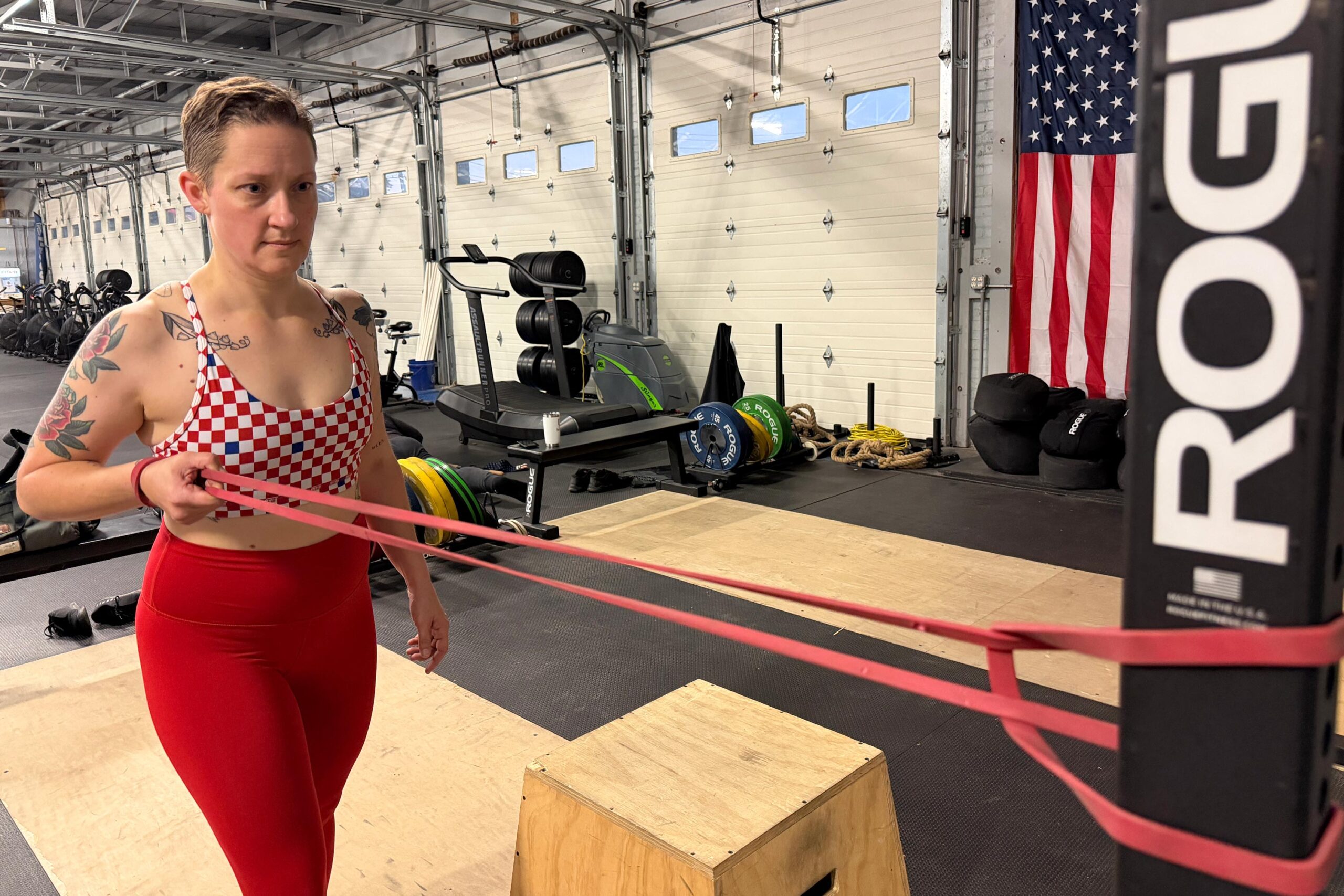Health
Combatting Tech Neck: 4 Effective Exercises from Experts

In an increasingly digital world, many individuals are grappling with a condition colloquially known as “tech neck.” This term refers to the forward head posture resulting from prolonged use of personal devices such as smartphones, tablets, and laptops. Physical therapist Patrick Suarez, based in Albany, New York, emphasizes the need for corrective measures to address this issue, which affects posture and can lead to discomfort and restricted movement.
Tech neck is primarily caused by the habitual tilting of the head in front of the body’s center of gravity. This habitual posture can lead to chronic pain and limited mobility. While the instinct might be to stretch the neck for relief, Suarez cautions that this approach often worsens the problem. Stretching the neck can lead to overstretching the muscles connecting the neck to the upper back and shoulders. Instead, he advocates for strengthening these muscles to promote proper alignment.
Understanding Tech Neck Beyond Devices
While personal device use is a significant contributor to tech neck, it is not the only cause. Regular driving can also lead to similar postural issues. Suarez advises individuals to ensure proper seating posture while driving. This includes adjusting the seat so that the back of the head rests against the headrest and the shoulders are positioned comfortably. Making these adjustments can help cultivate a healthier alignment over time.
Suarez acknowledges that achieving perfect posture continuously is unrealistic, especially for those already accustomed to poor habits. Instead, he suggests incremental improvements through mindfulness and a series of targeted exercises designed to combat the daily impacts on posture.
Four Strengthening Exercises to Alleviate Tech Neck
As individuals become more accustomed to the forward head posture, muscles in the neck can become elongated and weakened. This can lead to discomfort, particularly around the base of the neck and shoulders. To counteract this effect, Suarez has identified four effective exercises that strengthen the upper back and neck muscles.
1. **Wall Angels**
This exercise promotes better posture and thoracic mobility. Stand with your back against a wall, ensuring your low back, shoulders, and head are in contact with the surface. With your arms bent at 90 degrees and forearms against the wall, slide your arms upward as far as comfortable, then return to the starting position.
2. **Thoracic Spine Wall Rotation**
This exercise enhances rotational mobility in the upper back. Begin in a half-kneeling position beside a wall, with the right knee bent at 90 degrees against the wall. Place your fingertips behind your ears and rotate your torso to the left until both elbows touch the wall. Reverse the movement and repeat on the other side.
3. **Row Variations**
Incorporating pulling exercises strengthens the upper back and enhances shoulder alignment. For a single-arm row, anchor an exercise band at chest height. Stand with one foot forward, grasp the band, and pull it straight back, squeezing the back muscles at the end. For a high to low row, use a band anchored above your head and pull it down toward your ribs, focusing on the back muscles.
4. **Prone I’s, T’s, and Y’s**
These exercises target the key muscles around the shoulder blades to improve upper back extension. Lying facedown on a stability ball, raise your arms in different positions—forming I’s, T’s, and Y’s—while squeezing the shoulder blades together at the top of each movement.
By integrating these exercises into daily routines, individuals can effectively combat the effects of tech neck and promote healthier posture. Regular practice can lead to significant improvements in muscle strength and overall neck alignment, ultimately reducing discomfort associated with modern technology use.
-

 World5 days ago
World5 days agoExposing the Reality Behind Guatemala’s Garment Industry
-

 Politics5 days ago
Politics5 days agoLB Pharmaceuticals Quiet Period Ends October 21, Analysts Weigh In
-

 World5 days ago
World5 days agoHamas to Return Remains of Additional Hostage on Friday
-

 Business5 days ago
Business5 days agoRoyal Bank of Canada Upgrades Ovintiv to Outperform Rating
-

 Sports5 days ago
Sports5 days agoSaquon Barkley Reflects on James Franklin’s Dismissal from Penn State
-

 Entertainment5 days ago
Entertainment5 days agoSylvester Stallone’s ‘Alarum’ Surges in Streaming Despite Poor Reviews
-

 Health5 days ago
Health5 days agoFDA Announces First Nine Recipients of National Priority Vouchers
-

 Lifestyle3 days ago
Lifestyle3 days agoHistorian Seeks Help to Uncover Cherry Street’s Past
-

 Science5 days ago
Science5 days agoMIT Develops 3D Brain Models from Patient Cells for Custom Therapies
-

 Entertainment5 days ago
Entertainment5 days agoOlivia Nuzzi’s Memoir Set to Uncover RFK Jr.’s Controversial Texts
-

 Science3 days ago
Science3 days agoYale School of the Environment Launches Accelerated Master’s Programs
-

 Lifestyle5 days ago
Lifestyle5 days agoSouth Los Angeles Intersection Renamed to Honor Activist Danny Bakewell Sr.









